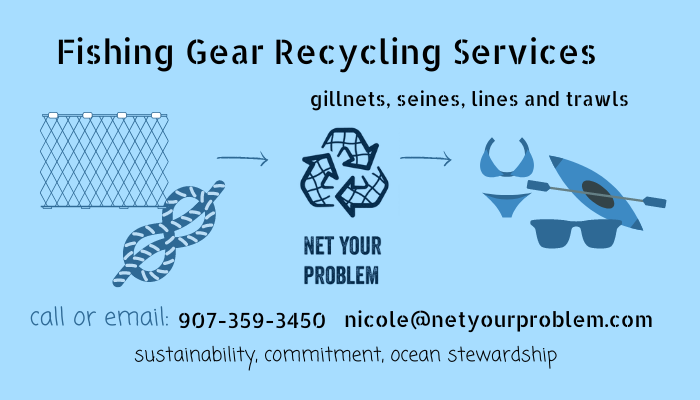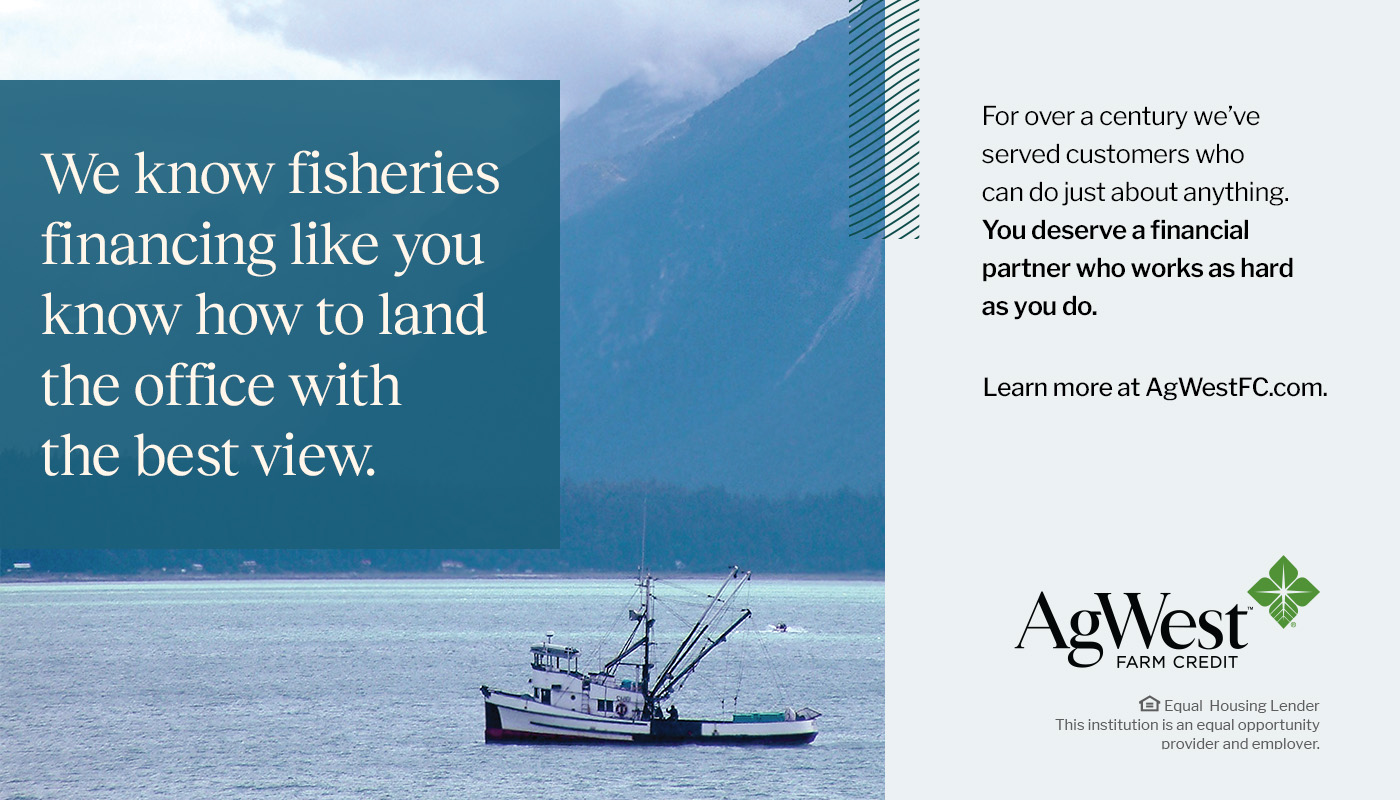Fish Factor by Laine Welch
September 29, 2020
Some surprising results are revealed in the first of a series of briefing papers showing how Alaska’s seafood industry has been affected by the pandemic from dock to dinner plates.
The updates, compiled by the McDowell Group for the Alaska Seafood Marketing Institute (ASMI), show that so far the amount of seafood that has been harvested is in line with previous years.
“While 2020 harvests have been significantly lower in some salmon fisheries…the declines are due to weak runs rather than reduced effort or other forces that might have some connection with the pandemic,” according to the latest brief.
“If we forgot about the pandemic and we just look at how much has been harvested, we're similar to past years, so that's a vote of confidence there,” said Garret Evridge, a McDowell fishery economist.
Market disruptions and increased operating costs definitely put downward pressure on the value of all that seafood, with the price plummet at Bristol Bay being perhaps the most striking example. The preliminary value of the Bay’s fishery this year is $140.7 million (not including post-season bonuses), compared to the all-time high of $306.5 million in 2019.
“And that certainly seems to be the trend across nearly all species. Generally, the pandemic has depressed prices across the board,” Evridge said.
Also pushing down the value was a smaller processing work force. The extra efforts to manage and mitigate Covid-related risks “are believed to be the primary cause of a 13% overall decline reported for July 2020, a decline of 2,500 jobs from July 2019,” the September brief said. Chaotic market changes also forced workers to produce lower valued salmon products.
Using Bristol Bay again as an example, where a compressed run plugged processing plants with millions of salmon, time and labor constraints meant that most of the fish had to be headed/gutted and frozen or canned instead of being trimmed up for pricier fresh or frozen fillets.
“What that effectively does is it reduces the average value per pound of the Bristol Bay pack, which is particularly difficult in a year when operating costs have increased so much,” Evridge said.
Those added costs aren’t going away anytime soon.
There are no hard data yet but interviews with processors indicate at least $50 million has been spent so far by inshore and offshore sectors, said Dan Lesh, a McDowell senior analyst.
“It’s definitely an estimate and it's a number that's likely to increase, not only through the end of 2020, but into 2021 and as long as this pandemic is in effect. We're trying to communicate that the industry is sustaining real operating cost increases,” Lesh said.
"The industry is taking on these costs out of pocket at the same time we are facing severe disruption in key markets and multiple pre-Covid cost burdens,” said Cora Campbell, CEO of Silver Bay Seafoods at a July 29 U.S. Senate committee hearing.
“While a fraction of these costs may be reimbursed, we face significant uncertainty because there’s no specific congressional directive to support health and safety protocol costs for critical seafood supply chains," Campbell said, adding that Covid prevention measures have not been included so far in federal relief loans and funds.
The McDowell team is waiting a few more months to get a better understanding of how Covid has affected volumes and values of Alaska’s top export. August and September are the peak export months for Alaska seafood; for salmon, about 75% of annual exports (by value) occur between July and October.
One advantage, Evridge said, is that global currency rates are playing in our favor. The dollar has trended weaker since February, making Alaska seafood more affordable to foreign buyers.
“It's important to focus on these bright spots,” Evridge said. “But there still is a big trade imbalance there with Russia, not to mention the ongoing trade war with China,” he said.
Overall, and despite all the difficulties, Evridge called 2020 “largely a success” for Alaska’s fisheries.
“We're still harvesting five to six billion pounds of seafood, the values are down, but we haven't fallen off a cliff,” he said. “If you just think back to the early stages of the pandemic, we were talking about the possibility of Bristol Bay not even opening and some of the worst scenarios weren't actually realized. So that's a real positive.”
Dinner plate update - Seafood is benefitting from three major eating trends during the pandemic and they are expected to continue.
“The first is the huge increase in home cooking as fewer people eat in restaurants,” said John Sackton, founder of SeafoodNews.com. “Second is the big increase in using frozen food, which is especially advantageous for the seafood industry, and third is the continued emphasis on health and diet during the pandemic.”
He added that national trend tracker IRI has been reporting on changes in protein and frozen food at retail grocery, and that the trends for both frozen and fresh seafood continue to be more positive than any other category.
“The continued strength of seafood consumption suggests that the strong performance of seafood at home will continue through the holidays and into the Lent season next year,” Sackton said.
That’s backed up by surveys done by the Alaska Seafood Marketing Institute, which has been quickly adapting to the challenges and opportunities posed by the pandemic.
“In December of 2019 before Covid, 70% of consumers cooked three times a week at home, and since Covid, 66% said they now cook at home more frequently,” said Arianna Elnes, an ASMI spokesperson.
She added that for the first half of 2020 restaurant sales were $65 billion lower, while U.S. grocery store sales for all products were up $43 billion from the same time last year.
To accommodate the increased interest in frozen foods and food safety, Elnes said ASMI quickly revamped its flagship Cook it Frozen campaign.
“This focused on filling the pantry and freezers and featured at a glance cooking tips and recipe ideas to help consumers build confidence in cooking wild Alaska seafood at home,” Elnes said. “The campaign was launched in March, right at the onset of Covid, and in May frozen seafood sales at retail were up 66%.”
ASMI also has partnered with notable chefs and dieticians on Instagram for Seafood Sundays and other cooking specials.
Its survey of over 13,000 consumers also showed that consumers want to know where there food comes from and that fishermen and farmers hold the most trust at nearly 70%.
“We're really trying to focus on origin,” Elnes said. “When we talk about local eating, it doesn’t just mean in terms of distance, but local as in knowing where it comes from. So we've launched a Choose Alaska campaign and it pitches seafood as critical to the national and global food supply chain, and it lets people know that when they're buying Alaska, they're supporting people's livelihoods.”
Elnes added that direct marketing by more fishermen also is on an upward trajectory. ASMI has posted a short survey to identify ways to assist with direct sales. (www.alaskaseafood.org/news/
Fishy questions? Questions are being solicited for the upcoming virtual debate between Republican Senator Dan Sullivan and Independent challenger, Dr. Al Gross. The questions must focus on a sole topic: Alaska’s seafood industry.
The fisheries debate, hosted by the Kodiak Chamber of Commerce and moderated by Rhonda McBride, is set for October 10 at 5:00pm. It will take place over Zoom and be live streamed to www.KodiakChamber.com, www.ComFishAK.com, and both the Kodiak Chamber and ComFish Alaska Facebook and YouTube channels. It also will be broadcast via KMXT to public radio stations statewide. Send topics or questions via email by September 30 to [email protected].






